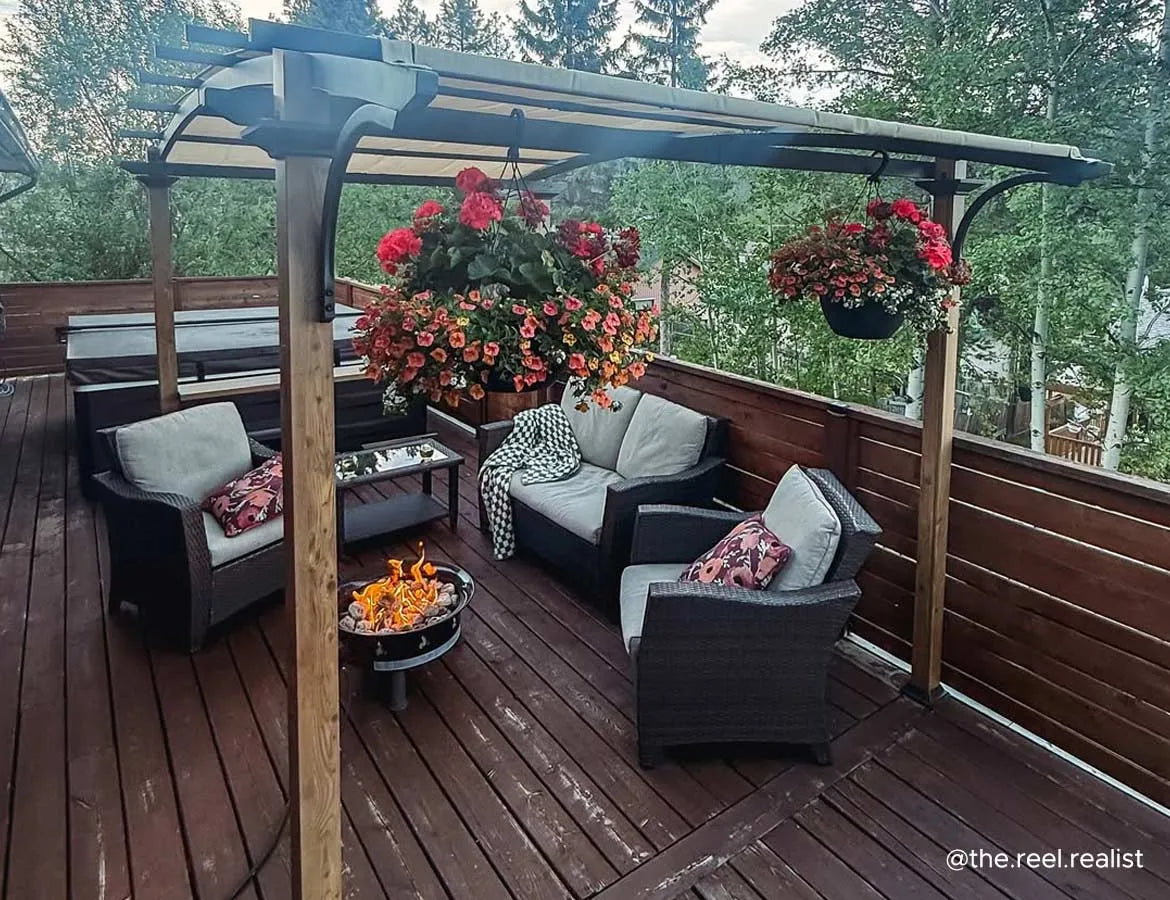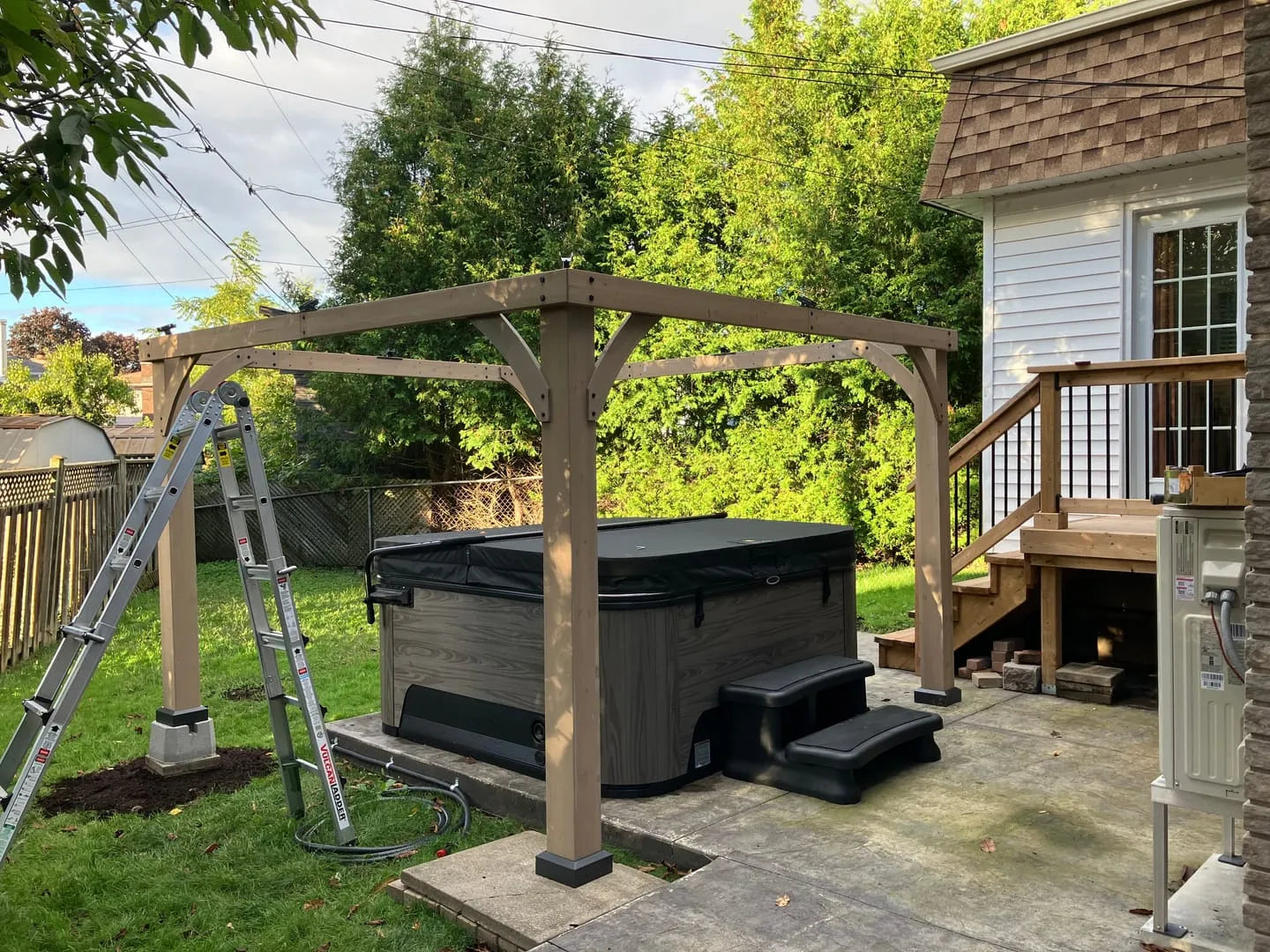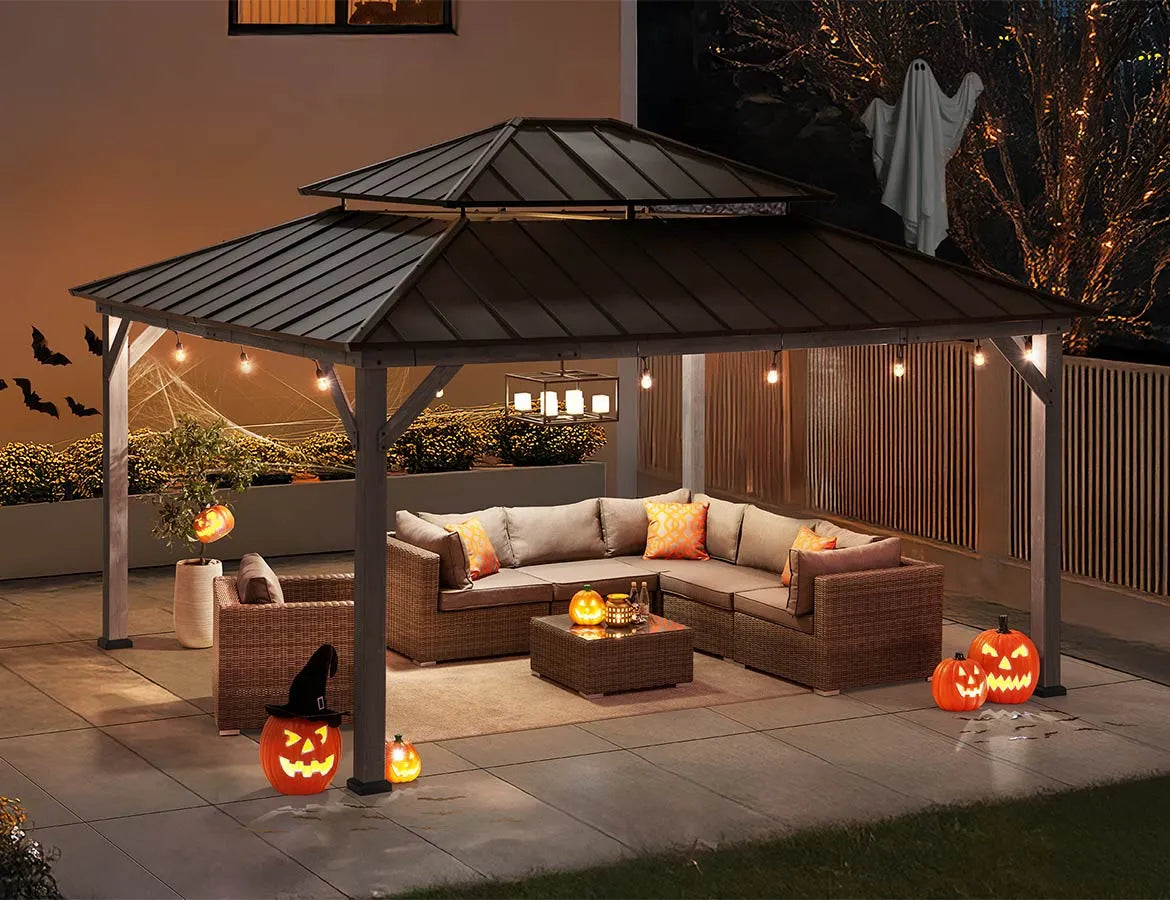Every great backyard starts with a vision — maybe it’s morning coffee in the sun, dinner under twinkling lights, or simply a quiet retreat surrounded by green.
But when it comes time to build that dream, one question often catches homeowners off guard:
Should you install the pergola before or after the patio?
At first, it seems like a small detail. But in reality, the order of installation shapes everything — the layout, drainage, structure, and long-term comfort of your outdoor living space.
So before you roll out concrete or unpack your pergola kit, let’s explore which comes first, why it matters, and how to make the right choice for your home.
1. Understanding the Relationship Between Pergola and Patio
A patio provides the foundation — it’s the stage where outdoor life unfolds. A pergola, meanwhile, adds the structure — the architectural frame that defines shade, privacy, and atmosphere.
The two work best as partners, not competitors. The challenge lies in synchronizing them.
A patio without a pergola can feel empty, while a pergola without a patio can feel unstable or unfinished. The magic happens when both are designed as one seamless ecosystem.
That’s why professional landscapers often begin with a single plan, viewing the pergola and patio as layers of one cohesive design.
2. The Case for Building the Patio First
Most experts — including SUNJOY’s design team — recommend installing the patio before the pergola.
Here’s why this sequence works best:
✅ 1. Foundation Stability
A patio creates a level, durable base for your pergola posts. Whether you’re working with stone pavers, concrete, or composite decking, a pre-leveled patio ensures your pergola stands evenly and securely.
Installing a pergola on unfinished ground risks shifting, uneven posts, or drainage issues over time.
✅ 2. Easier Positioning
With the patio complete, you can visualize exactly where your pergola will look best — centered with furniture, aligned with doors, or positioned to capture morning light.
This eliminates guesswork and prevents awkward placements later.
✅ 3. Cleaner Installation
Building the pergola after the patio means fewer interruptions in workflow. You won’t need to pour concrete around posts or cut pavers to fit existing structures.
Instead, you anchor the pergola directly into the finished surface for a clean, professional finish.
In short, the patio lays the groundwork — literally — for the perfect pergola installation.
3. When Building the Pergola First Makes Sense
That said, there are a few exceptions. Sometimes, the pergola should come first.
If your pergola design is fully custom or includes an integrated foundation (like concrete footers or embedded post anchors), installing it before the patio ensures precise alignment and structural integration.
For example:
If you’re embedding posts into concrete footings for heavy-duty models like SUNJOY’s aluminum pergolas, it’s best to pour the base and set the anchors before laying pavers.
If your pergola includes electrical wiring for lighting or heaters, installing it first allows you to hide conduits under the patio surface later.
In other words, the sequence depends on the structure type: prefabricated pergolas (like SUNJOY’s DIY kits) usually go after, while built-in architectural models may start before.
4. Pergola Anchoring Options and Why They Matter
A key factor in your decision is how the pergola will be anchored.
There are typically three methods:
1. Surface-mount anchors; These bolt directly into a finished patio (ideal for concrete or composite decks).
2. Embedded anchors. These are poured into concrete before the patio surface is completed.
3. Ground-staked anchors: Used for freestanding soft-top pergolas or temporary setups on grass or gravel.
SUNJOY’s pergola kits are designed with flexible anchoring options — most models can be safely installed on existing patios using pre-drilled post plates. This makes them perfect for homeowners upgrading an existing space without rebuilding from scratch.
Choosing the right anchor type ensures long-term stability and helps determine your ideal build order.
5. Design and Drainage Considerations
Beyond structure, the patio–pergola relationship also affects drainage, sunlight, and aesthetics.
Drainage
If you install a pergola first and pour the patio later, you may unintentionally trap water near the post bases. Over time, this can lead to corrosion or wood decay.
By laying the patio first, you can incorporate subtle slopes or channels to direct water away from structural points.
Sunlight and Shade
Your patio’s position relative to your house determines how much sun your pergola will filter.
A post-patio installation lets you observe light patterns throughout the day and fine-tune your pergola placement for maximum comfort. Visual Balance
From a design perspective, building the patio first provides a canvas to align pergola posts symmetrically.
The visual rhythm of tiles, beams, and shadows will feel deliberate rather than improvised.
6. The Role of Modular Pergola Kits
In modern backyard design, flexibility is everything — and that’s where modular pergola kits shine.
Brands like SUNJOY have simplified installation with ready-to-assemble systems that don’t require heavy foundation work.
That means homeowners can confidently build after the patio, using secure mounting plates rather than deep-set anchors.
These kits offer:
Pre-drilled posts for quick alignment.
Adjustable canopies for light control.
Optional add-ons like curtains, privacy panels, and LED lighting.
Whether your patio is wood, stone, or composite, these kits adapt easily — turning a finished floor into a personalized retreat in just hours.
7. A Real-Life “Before and After”
Imagine this:
Before: A basic rectangular patio — functional, but flat. The furniture fades under harsh sunlight; gatherings end early as dusk falls.
After: A sleek hardtop pergola stands above, its dark frame contrasting against the light pavers.
String lights cascade from the beams, soft drapes flutter in the evening breeze, and a fire pit glows beneath.
Same space, same square footage — yet the difference feels monumental.
This is what happens when structure meets intention.
8. The Expert Takeaway
So, should you build the pergola before or after the patio?
For most homeowners, the answer is simple:
Patio first, pergola second.
It’s the path of least resistance, offering stability, flexibility, and visual harmony.
But if your design involves heavy foundations, integrated wiring, or custom posts — start with the pergola’s base and build upward from there.
The secret isn’t in the sequence alone; it’s in the planning.
When your pergola and patio work together, they transform from two projects into one seamless outdoor experience — built to last, and built beautifully.






Leave a comment
All comments are moderated before being published.
This site is protected by hCaptcha and the hCaptcha Privacy Policy and Terms of Service apply.